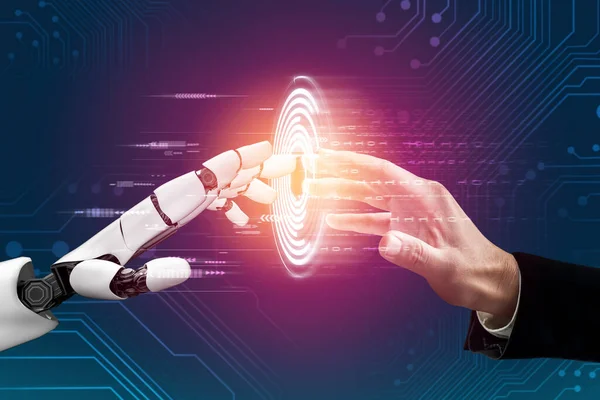Digitalization Optimization: Humans and Machines Work Together

Digitalization Optimization: Humans and Machines Work Together
By Adinda Ardita S.R.
Digitalization technology is the foundation for Industry 4.0, the current trend of transforming industries through digitalization. This involves converting physical processes and data into a digital format. This allows for interconnected machines, real-time data analysis, and the use of artificial intelligence. By leveraging digitalization, Industry 4.0 creates smart factories that are more efficient, flexible, and capable of producing customized products. Additionally, digitalization is fostering the growth of new technologies like additive manufacturing (3D printing) and the Internet of Things (IoT), which further enhance automation and data collection within industries.
Artificial intelligence (AI) is the secret sauce behind many of the newest smart machines driving Industry 4.0. These machines aren’t just following pre-programmed instructions; they’re constantly learning and adapting through machine learning algorithms. The possibilities with AI and smart machines are constantly evolving, promising a future of intelligent automation that optimizes production lines, improves safety, and unlocks entirely new manufacturing processes. While there are challenges associated with implementing Industry 4.0, such as cybersecurity threats and the need for workforce retraining, the potential benefits of digitalization technology are undeniable. It has the power to revolutionize how we manufacture goods, creating a more efficient, sustainable, and customer-centric industrial landscape.
Today’s era of Industry make humans and machines no longer working in separate worlds. Today’s workplaces are abuzz with collaboration, where each brings unique strengths to the table. Machines handle the heavy lifting of data analysis and repetitive tasks, freeing humans to focus on creativity, problem-solving, and tasks requiring social skills. Imagine a doctor using AI to analyze X-rays for faster diagnoses, or a factory worker teaming up with a robot to assemble products with unmatched precision. This powerful combination is boosting productivity, improving accuracy, and paving the way for exciting advancements across various industries.
The collaboration between humans and machines isn’t just about efficiency; it’s also opening doors to entirely new possibilities. For example, scientists are partnering with AI to analyze complex datasets in fields like genomics, leading to breakthroughs in disease research. Architects are using AI to design buildings that are not only aesthetically pleasing but also energy-efficient. Even artists are incorporating AI tools into their creative process, producing works that blend human imagination with machine-generated elements. This symbiotic relationship between humans and machines is pushing the boundaries of what’s achievable, accelerating innovation and progress across countless fields.
The future of industry is a symphony of intelligent machines and human ingenuity. Factories will transform into hubs of AI-powered machines, churning out customized products with incredible efficiency. Connected supply chains will ensure seamless flow of information, and next-gen technologies like 3D printing will further revolutionize production. This isn’t a future where humans are replaced by machines; instead, collaboration is key. AI will supercharge machines, making them not just productive but also predictive, working alongside humans to optimize production, improve safety, and unlock entirely new possibilities. This powerful human-machine teamwork will unleash a wave of innovation across industries, from medicine to art, pushing the boundaries of what’s achievable and shaping a brighter industrial landscape.
Source:

